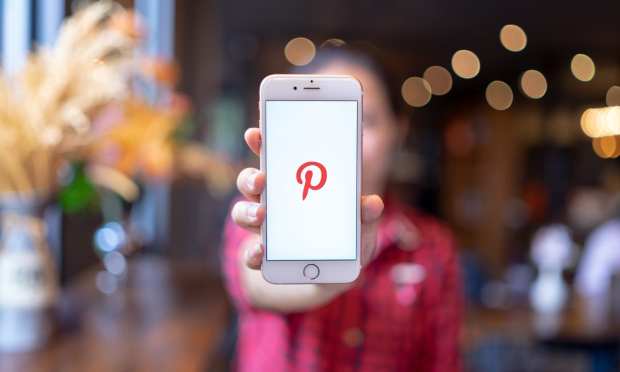Pinterest Gains Advertisers As It Competes With Other Social Networks

At a time when chaos and turmoil seem to have permeated everything from the pandemic to politics, social media sharing platform Pinterest is winning new advertisers large and small who are drawn to it as a haven of safety and positivity. While Facebook was never mentioned by name in Pinterest’s recent third-quarter earnings call, it’s no secret that some businesses are moving their brands away from places where boycotts and blowback have become increasingly common.
“We continued to benefit from marketers who are prioritizing positivity and brand safety,” Pinterest CFO Todd Morgenfeld told investors during the company’s earnings call last week. “Advertisers tell us that Pinterest is brand-safe relative to other consumer internet platforms, and we benefited from this in Q3.”
However, he added that it remains to be seen if the migratory trend will be sustainable, particularly after the U.S. presidential election. Still, Pinterest has made recent investments in technology and sales coverage. It’s also seeing a general uptick in media consumption due to the COVID era’s digital shift.
All of that contributed to the company’s improving results. Pinterest reported that revenues grew 58 percent year over year to $443 million, with global monthly active users (MAUs) up 37 percent year over year. The company’s net loss also narrowed 24 percent year over year to $94.2 million from a previous $124.7 million.
The arrival of some new advertisers to Pinterest helped results, but caught even the company by surprise. “We saw much more demand for our advertising services than we expected in Q3,” Pinterest President and CEO Ben Silbermann said of the third-quarter results.
In a direct bid to advertisers and users, Silbermann said the company has intentionally tried to make the platform engaging, useful and more shoppable.
Less Controversial Than Facebook
Pinterest’s ascendancy and status as a safe haven for brands marks a stark contrast to what AdWeek referred to as Facebook’s summer of widespread boycotts related to its failure to curb hate speech on the platform.
At the same time, Pinterest has been able to fly under the radar of the Big Tech antitrust crusade that is currently percolating in Washington and Europe, putting pressure on Facebook.
That said, Facebook is hardly showing signs of distress, as it continues to grow and adapt its multimodal platform to attract businesses large and small.
On Facebook’s investor conference call last Friday (Oct. 30), CEO Mark Zuckerberg said that more than 200 million firms use Facebook’s free tools, while the company also counts more than 10 million companies as active advertisers.
To grow the commercial space, Facebook said it is integrating its WhatsApp business features with Facebook Shops to allow SMBs to establish a simultaneous commercial presence across Facebook, WhatsApp and Instagram. Zuckerberg also reiterated that the company was in the process of “making it easier for people to buy products directly within a chat.”
Setting Cultural Trends
Whether it’s people spending more time at home, the return of 1990s styles or the growth of conscious consumption, Pinterest and its advertisers are serious about trend-watching, publishing and curating the Pinterest 100 list each year.
Morgenfeld said it’s a big part of the reason why advertisers – especially large CPG companies – are finding their way to Pinterest. Big clients included Hershey’s ahead of Halloween, Welch’s ahead of the back-to-school period and Miracle-Gro around the home gardening trend.
Additionally, the CEO said Pinterest saw an advertising rebound from large omnichannel retailers that had paused their spending in Q2.
“The notion that the commercial intent of our users translates into a leading indicator of where demand is going to go is really resonating,” he noted.
